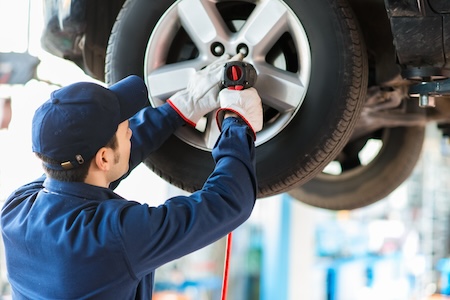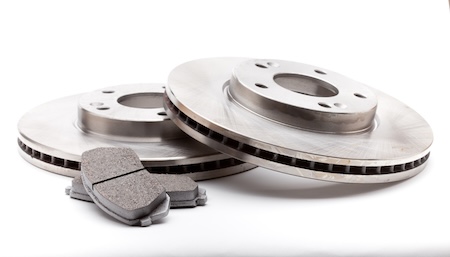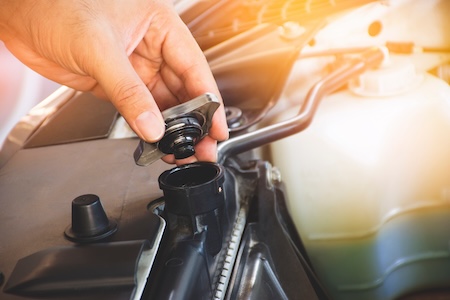If you’ve lived in Denver for any length of time, you’ve experienced temperature swings. We have our fair share of days over 90 degrees. Prefer it cold? It’s been known to get down into the negative twenties a time or two.
While you might not see 90 degrees and negative twenty in the same day, it isn’t unusual to see a fifty or even sixty-degree swing in a day. You know what it does to you. Imagine what it does to your car’s engine.
Those wild temperature swings we all love to complain about can wreak havoc on your vehicle, especially under the hood. Going from warm to freezing in a matter of hours can strain your engine, wear out critical parts faster, and leave you stranded with issues you could’ve avoided.
We see this all the time. The good news? You don’t have to be caught off guard. With just a little planning and regular maintenance, you can avoid engine trouble and keep your car running strong, no matter what the weather throws at you.
Here’s how.
Know What Temperature Swings Do to Your Engine
Your engine isn’t just a block of metal. It’s a complex system made up of moving parts, delicate sensors, and fluid-based systems that all work together.
When the temperature outside changes quickly, everything from the oil viscosity to coolant performance and metal expansion rates are affected. That leads to:
- Fluid thickening (especially oil and coolant)
- Battery drain or failure
- Tire pressure fluctuation
- Cracked hoses or brittle belts
- Increased condensation (which can lead to rust or corrosion)
- Engine misfires or rough starts
The result? Harder cold starts, overheating, strange noises, leaks, warning lights. Or worse, full-on breakdowns.
Stay On Top of Oil Changes
Engine oil is your first line of defense against temperature changes. It lubricates, cools, and protects your engine’s internal components. But it can only do its job if it’s fresh and at the right consistency.
In cold weather, oil thickens. If it’s old or the wrong grade, it won’t circulate properly, and that means your engine is running dry when it matters most.
Our advice?
Check your oil monthly and change it as recommended. In Colorado’s climate, synthetic oil is often a better choice; it handles extreme heat and cold better than conventional blends. And always use the grade recommended by your car’s manufacturer.
Keep Your Coolant Cool
Coolant (aka antifreeze) is another hero during Denver’s wild weather swings. It keeps your engine from overheating in the summer and freezing in the winter.
But old, dirty coolant can lose its ability to regulate temperature. And if the mixture isn’t right (it should be 50/50 antifreeze and water), it could freeze in your radiator or fail to protect against overheating.
Check your coolant:
- The overflow reservoir should be full
- The fluid should be clean and brightly colored (not rusty, brown, or cloudy)
- Have it flushed every 30,000–50,000 miles or as recommended
And remember—never check or open the radiator cap while your engine is hot.
Inspect Belts and Hoses Often
Denver’s dry air and rapid temperature shifts are tough on rubber. Belts and hoses expand and contract as temperatures rise and fall, leading to cracks, hardening, or brittleness over time.
You’ll want to:
- Visually inspect for any signs of cracks, fraying, or leaks
- Feel the hoses—are they too soft or too stiff?
- Listen for squealing (that can signal a slipping belt)
We recommend checking these at every oil change or service visit. Replacing a worn hose now is a whole lot cheaper than repairing engine damage later.
Test Your Battery—Before It Dies
A healthy battery is crucial for cold starts and smooth engine function. But batteries hate extremes, both heat and cold.
Denver’s winter mornings can cut a battery’s cranking power in half. And a hot summer? That can cause the fluid inside to evaporate, shortening its lifespan.
Avoid surprises:
- Have your battery tested before winter and again in spring
- Check for corrosion at the terminals
- Clean connections if needed
- Consider replacing the battery if it’s more than 3 years old
It only takes a few minutes, and it could save you from a no-start situation on a freezing morning.
Check and Replace Air Filters Regularly
Engines need the right mix of air and fuel to operate efficiently. And with dust, pollen, and sudden temperature drops affecting air density, your engine air filter plays a key role in keeping everything balanced.
A clogged filter can reduce fuel efficiency, cause rough idling, or trigger the check engine light. In Denver’s dusty summers and unpredictable seasons, that filter can clog faster than expected.
Pop it out and check.
If it’s dirty, replace it. Simple as that.
We recommend checking every 12,000 to 15,000 miles—or sooner if you drive in dusty conditions.
Your car breathes easier—and so does your wallet—when airflow is clear.
Watch for Warning Signs After Weather Shifts
Even if you’re on top of your maintenance, your vehicle might still give you a heads-up when something’s not right.
Be alert for:
- Slow starts or stalling
- Knocking or pinging noises
- Engine running hotter or colder than usual
- New dashboard warning lights
- Unusual smells (burning, sweet, or fuel-like odors)
Any of these can be early signs of trouble. And catching them early could mean the difference between a quick fix and a major engine repair.
Warm Up Smart—But Don’t Overdo It
It’s tempting to let your car idle for 10 minutes on cold mornings, but today’s engines don’t need long warm-ups. In fact, extended idling can cause fuel buildup and wear out your engine faster.
Instead, start your car, wait 30–60 seconds, and drive gently for the first few miles. That gets your oil circulating and your engine up to temperature faster without wasting gas or hurting performance.
Bonus: Schedule a Seasonal Engine Check
One of the best ways to avoid engine trouble? Let a pro take a look before the season changes.
We offer seasonal inspections that include:
- Full fluid checks
- Battery and charging system tests
- Belt and hose inspection
- Air filter checks
- Diagnostic scans for potential issues
We’ll catch the little problems before they become big ones—and give you peace of mind as Denver’s weather flips from one extreme to another.
Don’t Let Denver’s Weather Catch You Off Guard
We can’t change the forecast. But we can help you stay one step ahead of it.
By paying attention to your fluids, filters, belts, and battery, and scheduling regular service, you’ll avoid most of the engine trouble that comes with Colorado’s unpredictable climate.
And if something still feels off? Don’t wait for a breakdown. Bring your car in. Our experienced techs know the local conditions and can help you prepare for anything—sun, snow, or both in one day.
Schedule your seasonal engine check today and stay road-ready, no matter how crazy the forecast gets.










